Uspenska Square reconnects with Ukrainian culture
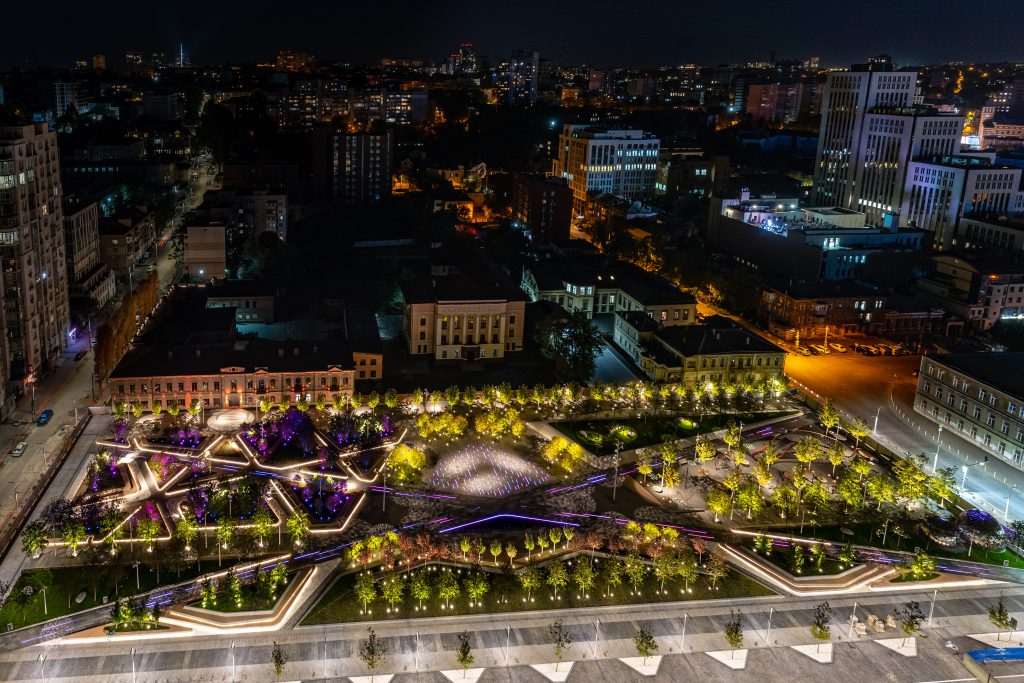
Since the 2022 Russian invasion of Ukraine, the industrial city of Dnipro has been the target of multiple missile attacks, damaging residential areas, Dnipro’s International Airport and critical infrastructure. Despite the dangers and uncertainties of war, local residents and businesses have banded together in support of their country. (See “A Thousand Battles, a Thousand Victories.”)
Uspenska (translated, “Assumption”) Square plays an important role in the pedestrian environment of Dnipro, serving as a hub of public activity and an important component in the city’s historic center. In the 19th century, the Assumption Cathedral was located on Uspenska Square, surrounded by a plaza that served as a significant focal point for local residents. During the Soviet era, the cathedral lost its traditional purpose and architectural value, and the local space around it stagnated. The square ceased to serve as a hotbed of social activity and devolved into a transitory and characterless area.
Since Ukraine’s independence in 1991, the western part of the square with the former cathedral has become the city’s largest transport hub, where public and inter-city transport arrives from both banks of the Dnipro River. While pedestrians flocked to transportation around the area to access the surrounding commercial, cultural and recreational areas of the city, the space remained uninviting and in need of a refresh.
“The part of the square that lies on the way to Lyvarnaya Street and the embankment gradually lost its significance and meaning,” explained Mykola Kabluka, founder and design and art director at Dnipro-based Expolight. “It turned into an empty transit zone with neglected trees and no landscaping, where people simply passed through. Its planning structure and functionality did not meet modern needs for a safe and inclusive pedestrian space, and the surrounding buildings had little interaction with this part of the area, although the square is surrounded by commercial, residential, educational and cultural buildings. Therefore, the main task was to revive the square as an important part of the city’s pedestrian framework, making it more humanistic and better for social interaction.”
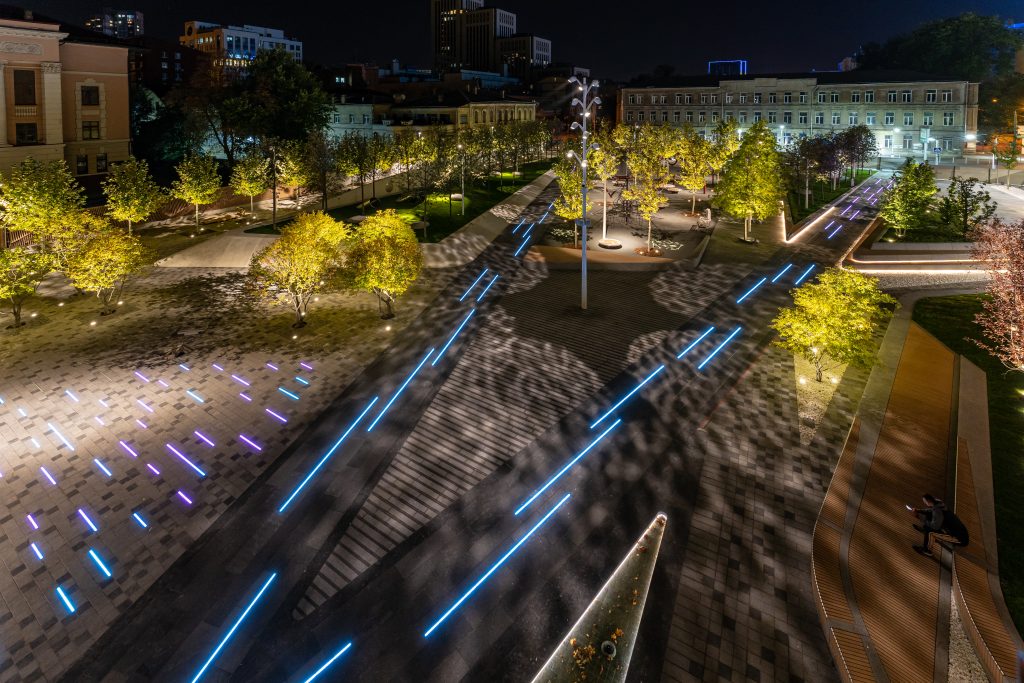
The revival of Uspenska Square was focused on three main goals: showing the caustic effects of the passages to the river, highlighting the dynamics and connection of a large flow of people within the space, and connecting the location with Ukrainian culture. The structure of the square resembles a composition of intertwined threads, where media paving is used to show the “threads of people’s movement.”
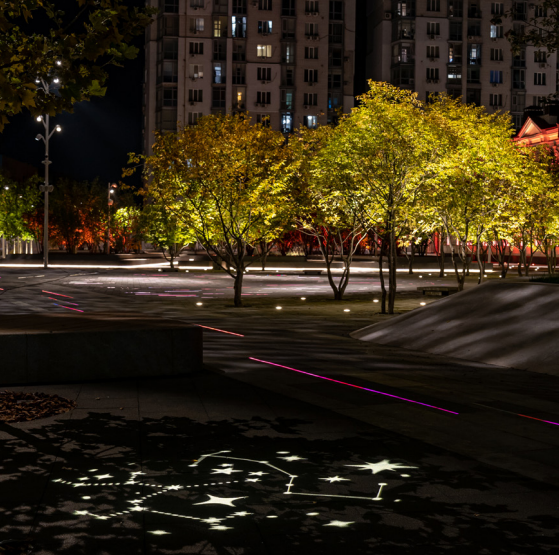
“We made these light lines interactive, which symbolizes the influence and connection of people with the city,” said Kabluka. “When people enter the square, a motion sensor is triggered, and the light guides the person along the path, responding to their steps. We control the brightness, color and dynamics of the light to create the most comfortable atmosphere for people on the square. The color modes in the square’s lighting are tied to the relevant holidays and events and change according to the calendar.” Expolight installed adjustable luminaires with different optics on high poles to illuminate the general space as well as provide beautiful natural shadows from the tree crowns. In the evening, the green space in the square turns into a magical forest, with the tops of the trees outlined by different shades of RGBW light. A comfortable and cozy atmosphere was created by placing hidden light below eye level, under the benches, while a more exuberant space was designed for the playground, where gobo projectors cast floating constellations on the ground with which children can interact. The luminaires on the square are custom-made by Expolight Instruments, a laboratory specially designed for the project. All the lights are connected into a single flexible system that can be easily controlled and configured from anywhere in the world right from a laptop via the Expolight Cloud Control System.
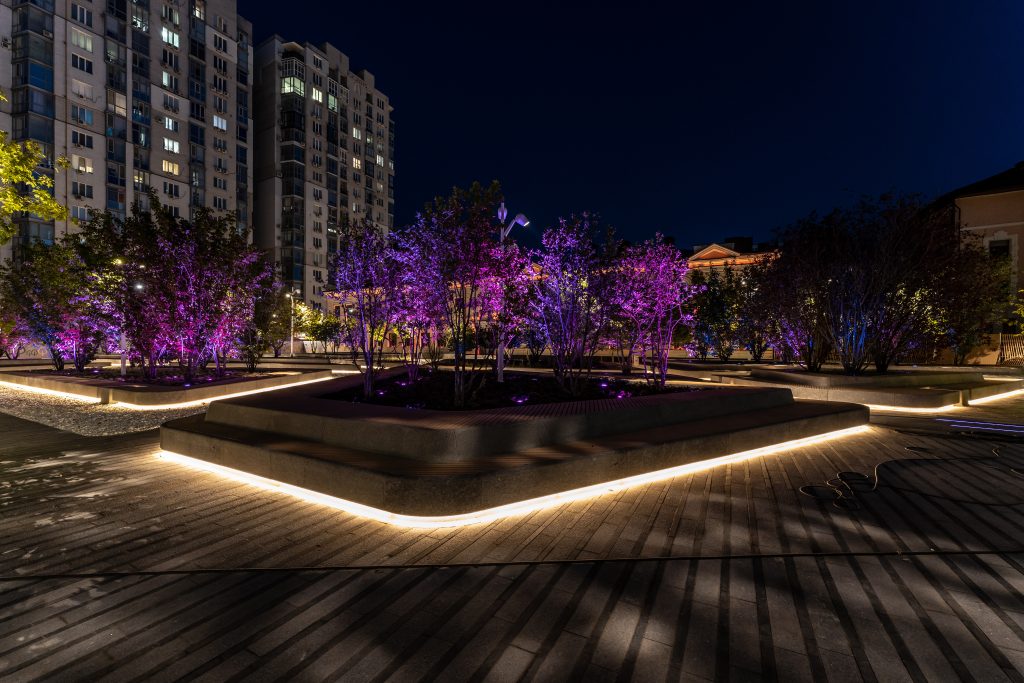
In addition to the square, Expolight also created lighting for the façade of the Dnipro Center for Contemporary Culture (DCCC), fitting it into the philosophy and atmosphere of the square. “Together with the DCCC, Uspenska Square has stimulated city life in Dnipro,” Kabluka stated. “And the many citizens who spend time here are a testament that life goes on.”
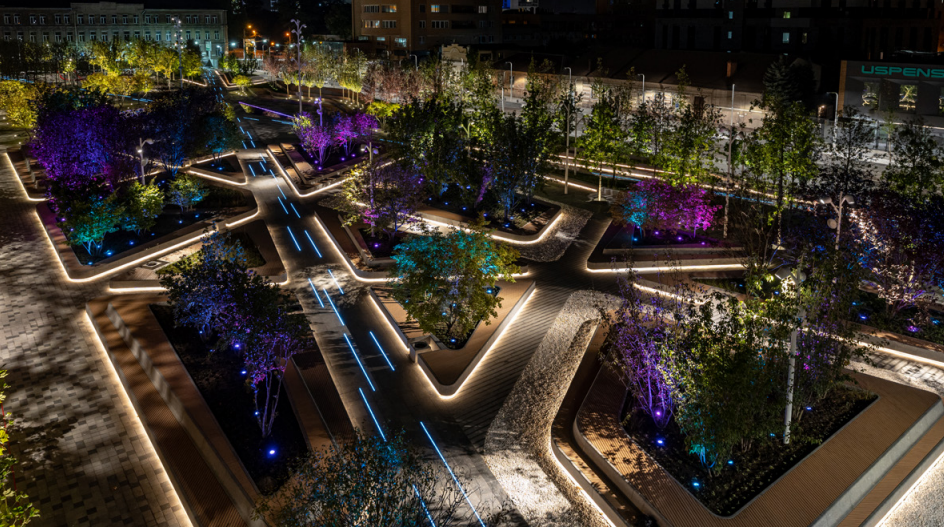
THE DESIGNERS |
- Mykola Kabluka is the founder and design and art director at Expolight.
- Dmitry Volik is the main architect for the city of Dnipro.
- Ksenia Donetskaya is an architect for the city of Dnipro.
- Daria Koshcheeva is an architect for the city of Dnipro.
- Igor Andrienko is an architect for the city of Dnipro.
- Irina Khvostikova is an architect for the city of Dnipro.
A Thousand Battles, a Thousand Victories
By Mykola Kabluka
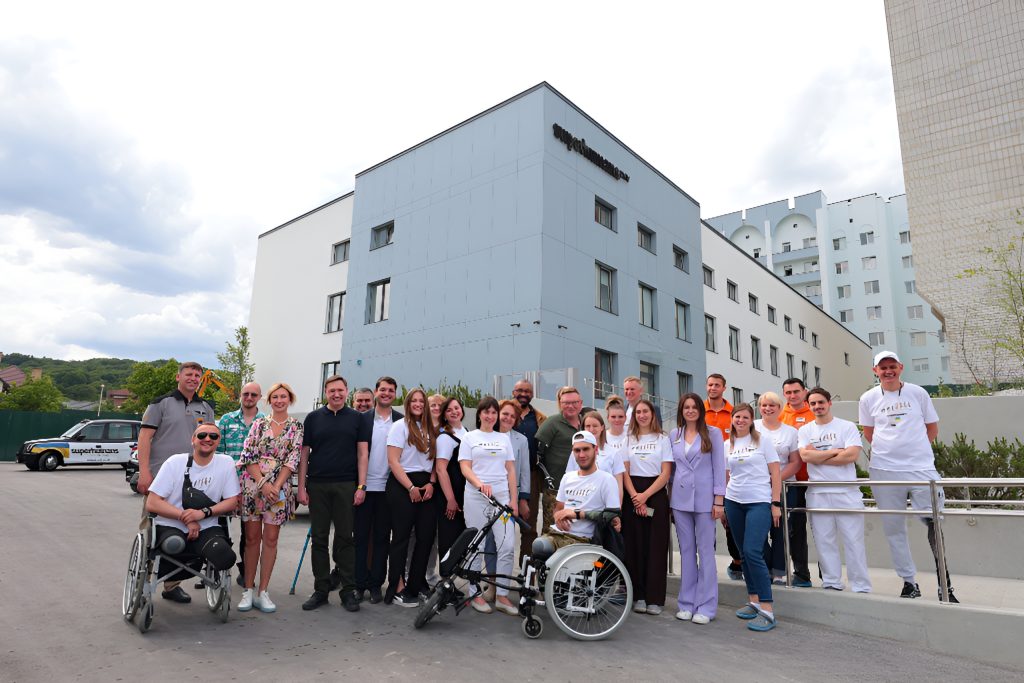
There are very few people in Ukraine who have not been affected by the war. We have close friends who have already died, colleagues who went to the front from the first days and acquaintances who have lost their lives, particularly those from Mariupol. Everyone is feeling pain and empathy at this time.
The first days were obviously shocking. When many people started to leave Dnipro, Expolight wanted to show that we were here and that we believed everything would be fine. We were among the first workers to come to the office—initially, semi-remotely and then fully in-person. We returned to the office as a way to provide confidence and reassurance that through our work, we are supporting the country.
From the very beginning of the full-scale invasion, we have been actively helping as volunteers to set up lighting in bomb shelters, and we continue to provide material support to the Army and all those in need, especially employees who have joined the Armed Forces or those with relatives at the front. When Russia began destroying energy facilities, which led to problems providing electricity, Internet and water, it was crucial for us to make the office autonomous. It was a real shock when there was suddenly nothing available in a city of a million people—no electricity, heat, traffic lights, mobile phone service; it was like a dead city.
To continue to actively work, we purchased a powerful generator and Starlink high-speed Internet and even drilled our own well. Almost the entire Expolight team stayed in Dnipro, where our office is located, and our office became a point of unbreakable, reliable stability. We, like all Ukrainians, demonstrated resilience and a desire to work under harsh conditions. Thanks to our team’s skills, we have started to work abroad even more, including projects in Dubai, Vienna, London, Istanbul and Nice, but the support of local customers has been particularly pleasant and rewarding. We completed some domestic projects at an almost break-even point (and sometimes at a loss), because we supported those who stayed in the country and those who are building. We even implemented some projects on a patronage basis if we saw them as having great social significance, such as our work with Ukraine’s Superhero Center, an orthopedic specialist clinic for the treatment and rehabilitation of war victims who are dependent on a prosthesis due to amputation.
We have mobilized all our strength to continue developing Ukraine’s potential even in such difficult times, and we are very proud of our unwavering friends, partners, business owners and brands who are not afraid to take risks and do not stop building and rebuilding. We are very pleased and honored to be part of these projects. And these conditions motivate us even more to be inventive, active and bold in our decisions.
Downed Drones, Upcycled Lamps
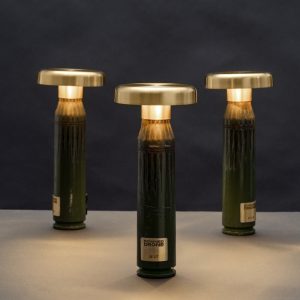
On May 4 and 16, 2023, the Ukrainian capital was under siege as Russian drones and missiles descended upon Kyiv. Ukrainian air defenses successfully shot down waves of attacks—including six Russian Kinzhals; nine Kalibrs; three S-400, Iskander-M ground-launched missiles; and nine drones—leaving behind spent missile shell casings. Local design studio YOD Group put those shell casings to good use by creating limited-edition Downed Drone lamps, a symbol of hope that further supported the country’s defense efforts.
“When we saw the spent shells, we brainstormed, looking for an upcycling idea,” explained Volodymyr Nepiyvoda, co-founder and designer at YOD Group. “The lamp was one of the first ideas, and we liked it because it symbolizes the light that always wins against darkness. A shell looks brutal, but it is a powerful symbol of saved lives and a material sign of our history. We also created special boxes for lamps that can be used as birdhouses. It is also a metaphor. Shells killed drones—artificial birds that aimed to bring death. So, we created boxes for real birds that can bring new life, their nestlings. The main value of the lamp is in the story behind them, but at the same time, we aimed to create an object that looks good in different interiors, even if you do not know the provenance.”
The 1-W wireless lamp charges from a standard type-C socket. Fully charged, it works for approximately four hours. The design unites a body with the harsh exterior of the munition shells with an elegant brass top. A nameplate was added that includes a unique serial number of the model; only 40 of the lamps were produced, which sparked interest in the exclusive item. YOD Group invested $4,000 in the project and distributed lamps to those who donated $1,100. The entire collection sold out in approximately four months, raising $44,000 in the process, with all proceeds donated to Ukraine’s military campaigns. Despite its overwhelming success, there are no plans to produce additional lamps in the future, but the company is continuing to do its part to support the Ukrainian war effort.
“Maybe we launch some new thing in the future,” Nepiyvoda said. “We continue to work on raising money for militaries, support our army and make Ukrainian victory closer.”

